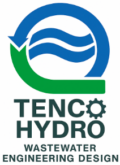Incorporating automation into industrial tank design revolutionizes operations by enhancing efficiency, accuracy, and safety. Automation involves integrating advanced technologies, such as sensors, controllers, and software systems, to monitor and control various tank processes. Here, we delve into the critical considerations when designing automated tanks for industries such as food and beverage, pharmaceuticals, chemicals, and more.
1. Defining Objectives and Requirements
Before embarking on the design process, it is crucial to define the specific objectives and requirements of automation. These may include improving process efficiency, enhancing product quality, reducing manual intervention, ensuring compliance with industry standards, and increasing overall productivity. Understanding these goals helps in selecting the appropriate automation technologies and systems.
2. Selecting the Right Sensors and Instruments
Sensors and instruments form the backbone of any automated tank system. Key parameters to monitor include temperature, pressure, level, flow rate, and chemical composition. Selecting high-precision, reliable sensors that are compatible with the specific requirements of the process ensures accurate data collection and control. Common sensors used in automated tanks include:
- Level Sensors: Ultrasonic, radar, or capacitive sensors to monitor liquid levels.
- Temperature Sensors: Thermocouples or RTDs for precise temperature control.
- Pressure Sensors: Transducers or gauges to measure and regulate pressure.
- Flow Meters: Electromagnetic or ultrasonic flow meters for accurate flow measurement.
3. Integration with Control Systems
The collected data from sensors must be integrated into a centralized control system. Programmable Logic Controllers (PLCs) and Distributed Control Systems (DCS) are commonly used for this purpose. These systems enable real-time monitoring, control, and automation of tank operations. Selecting a control system with user-friendly interfaces, scalability, and robust communication capabilities is essential for efficient operation.
4. Ensuring Communication and Connectivity
Effective communication and connectivity between various components of the automated system are crucial. This involves using industrial communication protocols such as Modbus, Profibus, or Ethernet/IP to facilitate seamless data exchange. Additionally, integrating Industrial Internet of Things (IIoT) technologies can enhance connectivity, allowing remote monitoring and control through cloud-based platforms.
5. Designing for Safety and Compliance
Automation can significantly enhance safety by reducing human intervention in hazardous environments. However, it is essential to design automated tanks with built-in safety features. This includes incorporating emergency shutdown systems, fail-safes, alarms, and interlocks. Ensuring compliance with industry standards and regulations, such as OSHA, NFPA, and ISO, is also critical for safe and lawful operation.
6. Scalability and Flexibility
Designing automated tanks with scalability and flexibility in mind allows for future expansion and adaptability to changing process requirements. This involves selecting modular components that can be easily upgraded or replaced, as well as designing control systems that can accommodate additional sensors and instruments.
7. Data Management and Analytics
Automation generates vast amounts of data that can be leveraged for process optimization and decision-making. Implementing robust data management and analytics tools enables real-time data visualization, trend analysis, and predictive maintenance. Utilizing machine learning and artificial intelligence can further enhance process efficiency and product quality by identifying patterns and anomalies.
8. Maintenance and Support
Automated systems require regular maintenance and support to ensure optimal performance. Designing tanks with easy access to sensors, instruments, and control systems simplifies maintenance tasks. Additionally, providing comprehensive training for personnel and establishing a support network with the automation system provider can help address technical issues promptly.
9. Cost-Benefit Analysis
While integrating automation involves an initial investment, conducting a thorough cost-benefit analysis helps justify the expenditure. Consider factors such as increased efficiency, reduced labor costs, enhanced product quality, and minimized downtime. A well-designed automated tank system can yield significant long-term savings and return on investment.
Conclusion
Integrating automation into industrial tank design offers numerous benefits, including improved efficiency, accuracy, safety, and compliance. By carefully considering the objectives, selecting the right sensors and instruments, ensuring effective communication and connectivity, designing for safety and compliance, incorporating scalability and flexibility, managing data effectively, and planning for maintenance and support, manufacturers can create advanced automated tank systems that meet the demands of modern industrial processes.
For more insights into industrial automation and tank design, stay tuned to our blog or contact our team of experts for personalized solutions tailored to your specific needs.
Reach out to us for more information or to discuss how we can help you integrate automation into your tank design for enhanced performance and efficiency!
